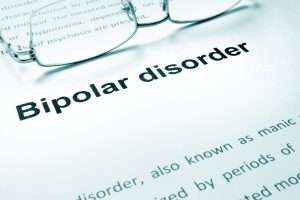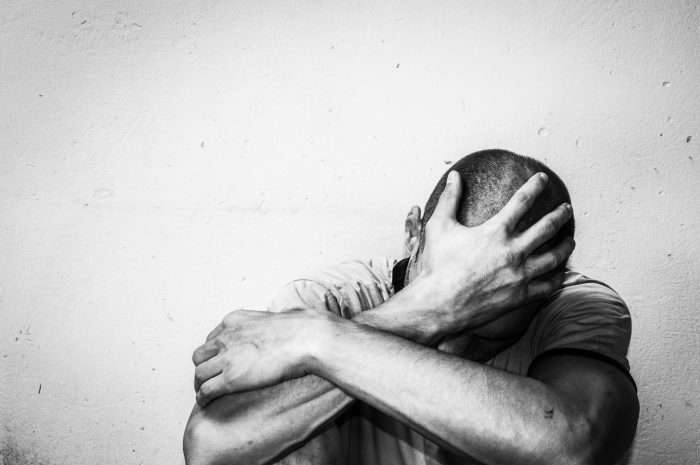What Are the Signs and Symptoms of Bipolar Disorder?
Bipolar disorder can manifest in several ways. Bipolar depression symptoms, for example, are when a person exhibits extreme mood changes, going from very upbeat and active, to sad and hopeless, or down and inactive. In depressive states, the symptoms are:
- Sadness and hopelessness,
- Difficulty with sleeping regular hours, or even oversleeping,
- Feelings of uselessness, being unworthy, without anything to look forward to,
- Lack of interest in doing anything, even regular duties like housework and taking a shower,
- Symptoms may lead to thoughts of suicide.

A person can be depressed or sad and in mourning for a friend or family member who has passed away. Time is needed to reflect and heal from the loss. But when there is no real evidence for why someone is depressed, then it is time to worry and seek help, especially when someone has depressive symptoms often.
Women are more likely to have depressive symptoms than men and symptoms may start in childhood, or between the ages of 15 and 30, according to MentalHealth.com. Women also have postpartum depression after having a baby, due to the many hormonal changes in the body and brain. Depression is just one sign that falls under bipolar disorder caused by any number of factors, such as genetics, environmental surroundings, biochemical, psychological, and more.
Manic Episodes of Bipolar Disorder
Manic episodes of bipolar disorder are seen as extreme behaviors, such as when a person is on a high for an extended period. Yet, when viewing the behavior, it appears abnormal, forced, and so extreme that it does not seem like the person you knew. The person might talk very fast and hardly let you in to make a comment of your own.
When the person switches over to a depressive state, then the differences can be glaring. Both manic states of bipolar disorder, extreme highs, or lows, in personality characteristics, can strongly impact that person’s daily life at work, at home, and in relationships. Manic expressions are, therefore, usually diagnosed as bipolar disorder. Here are a few symptoms of mania that you might observe, aside from fast or “pressure” of speech:
- Easily distracted and moving from one thing to the next without completing some of them,
- Engages in risky behaviors, such as spending lots of money in a short time period, gambling, unprotected sex,
- Sleeps for very short periods of time, and
- Endures hallucinations or delusions.
Types of Bipolar Disorder
There are several types or categories of bipolar disorders to review.
- Bipolar I Disorder: This is the most severe level of bipolar disorder. A mania episode that lasts seven days or more, or reaches a level that hospitalization is required. An event of depression lasting two weeks may occur after the mania episode.
- Bipolar II Disorder: While both mania and depressive events may occur here, the symptoms are less severe than Level I. The depression event may occur before or after the manic episode. This level is sometimes called hypomania, according to Medical News Today.
- Cyclothymic Disorder: Hypomania and depression fall under this category and can last for two years or more in adulthood. Some children have it only for a year.
- Substance Abuse Disorder: While this is not an official level, most people who abuse substances (drugs, alcohol), develop similar symptoms although not as high as Level I bipolar disorder.
In this last level, brain disorders occur because of drug and alcohol chemicals that affect and change brain cells. In medical terms, this behavioral outcome of substance abuse is known as a common co-occurring disorder where there are both mental issues bordering on mania disorder as well as physical substance addiction. In such a situation you have a dual diagnosis with both parts treated at the same time.
Manic disorders on the first level put people in danger as the person’s behavior is unpredictable. It is hard to know whether you can reason effectively with them. Entering a treatment program at our rehabilitation center San Diego, specifically designed for dealing with mania disorders, can help with regulating the episodes. This manic disorder group of people is also more prone to thoughts of suicide, among 10 to 30 percent of the general population. It is important to get treatment as soon as possible after the diagnosis.
Seeking Help after Diagnosis
If you have experienced any of the symptoms mentioned in this article, consider going to a treatment center and getting a consultation. One recommendation made will be to get an assessment done so both you and the treatment medical staff will know how to treat you. Even the worst debilitating disorders, such as manic disorder, can be treated so you can live a happier and more productive life.
Pacific Bay Recovery can help you with any substance addiction and/or mental issues you might have so you can regain a happy and functional lifestyle again. Call us for a free consultation and to set up an appointment to start getting help as soon as possible. 619-350-8220.


